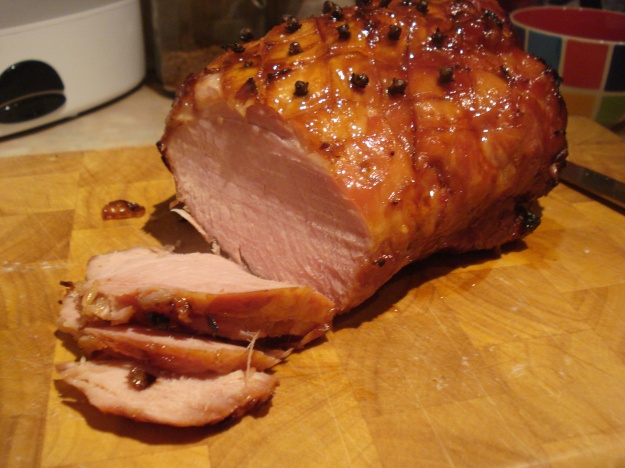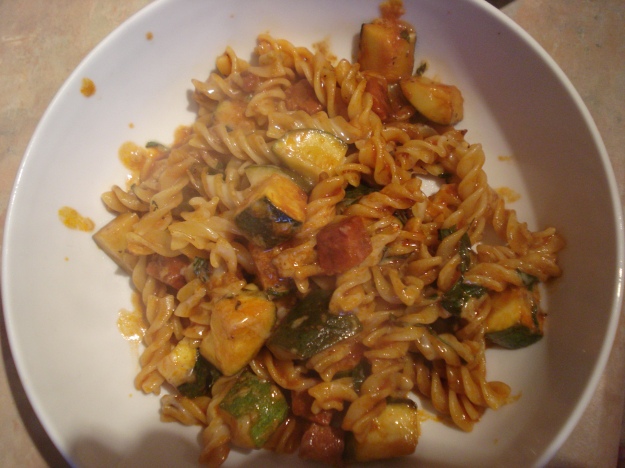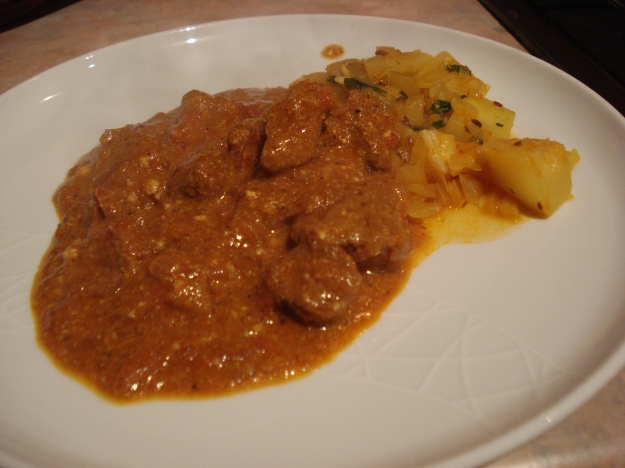I absolutely adore a ham or gammon at Christmas. My Mum always had one hanging around the house from Christmas Eve onwards, and it’s something I still do every year. I favour twice-cooking, a long boiling followed by a fierce blast in the oven with a sticky sauce dribbled over the top. I spotted Gordon Ramsay’s recipe from this year’s and knew I had to give it a try.
One of the key things that makes or breaks a dish like this is the quality of the meat. Start from a poorly-reared, not-looked-after anonymous pig and you’ll end up with a bland pointless dinner. It’ll probably be watery, tasteless and feel like a massive waste of time. Do you and your family a favour when buying gammon (or any other meat for that matter) – go up a level in the quality of meat you buy. Put the Basics range to one side and get something a little better. More expensive yes, but with a fuller flavour and the peace of mind that your animal had a decent life. Freedom Food, outdoor reared, outdoor bred, free-range or organic – these are the labels to look for.
If you’d like to learn more about pig welfare, please visit the RSPCA’s Think Pig Facebook page.
This recipe, based on Gordon Ramsay’s, was great. The key is to repeat the glazing over and over, every ten minutes or so. This will help deepen the flavour and form a beautifully sweet and tasty crust that’s irresistible. Aside from as a roast dinner, I also ate this with some bubble and squeak, as a sandwich and with some chutney. Then I also got a wicked stock to make a soup from, so although the meat is expensive in the first place it’s a dish that keeps on giving.
Adapted from a recipe by Gordon Ramsay. The original honey glazed ham recipe is here.
Honey-glazed Christmas ham:
2.5kg unsmoked gammon joint
4 carrots, roughly chopped
2 celery sticks, roughly chopped
1 onion, quartered
4 cloves of garlic
1 tablespoon black peppercorns
1 tablespoon coriander seeds
1 cinnamon stick
3 bay leaves
A handful of cloves
For the glaze:
100g golden caster sugar
50ml Marsala
25ml sherry vinegar
125g honey
- Put the gammon in a large pot along with the veg, peppercorns, coriander, cinnamon and bay. Barely cover with water, bring to the boil and leave to simmer for about 3 hours, or until you can easily sink a knife into it. Every so often skim and scum that floats to the surface. Allow the meat to rest in the liquor for at least half an hour, but any more or less wouldn’t hurt.
- Pre-heat the oven to 180°C. Melt the glaze ingredients together gently in a saucepan.
- Remove the skin from the gammon and score the fat in a pretty diamond pattern. Stud each diamond with a clove. Very gently trickle some glaze over the meat. Take your time and make sure the whole surface is covered. Pop in the oven.
- After 10 minutes take the ham out and repeat the glaze, again gently. Do this every 10 minutes until the gammon has cooked for 40 minutes, when the joint is a gorgeous golden brown. Allow to rest for 10 minutes before carving. It’s amazing, and brilliant cold too.





